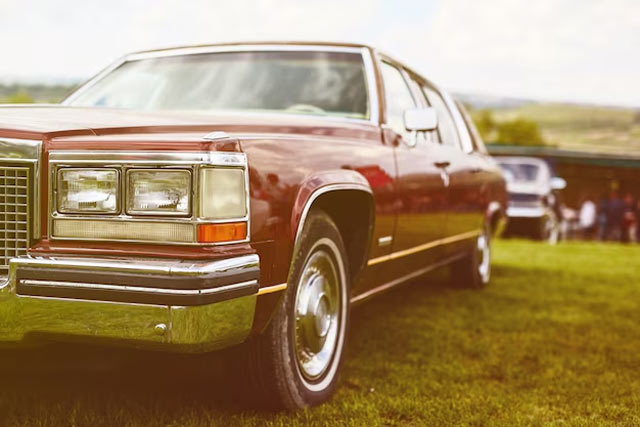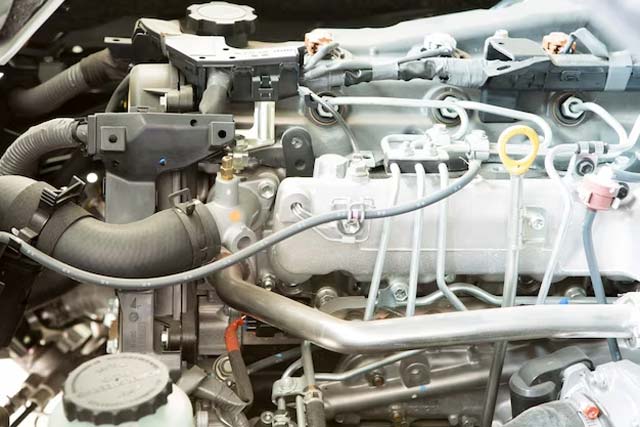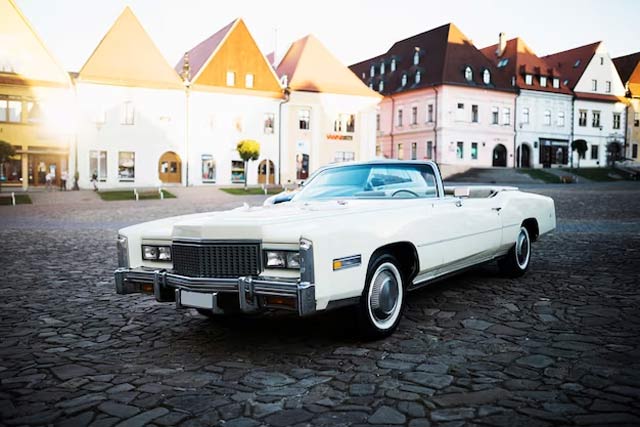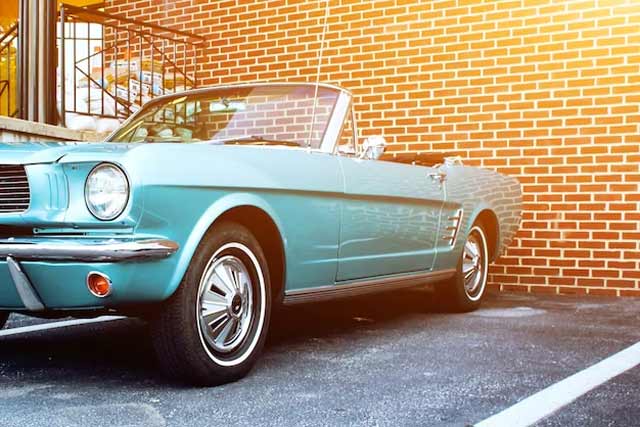Whether they’re time machines or cherished family heirlooms, classic cars hold a certain magic. Their deep connection to our collective heritage and sense of nostalgia draws enthusiasts in, and the enduring passion for collecting and restoration of vintage cars ensures these treasured vehicles will live on for generations to come.
But is it possible to balance preservation and sustainability? Increasingly, restorers are seeking eco-friendly solutions to minimize environmental impact.
1. Electric Powertrain Conversions: Driving Classics into the Future

1.1 The Rise of EV Restomods
Breathing new life into classics, electric powertrain conversions emerge as a thrilling frontier for enthusiasts. With the right conversion kits, classic cars transform into silent, high-performance marvels. The EV resto-mod movement gains momentum, offering a greener alternative that aligns with the evolving automotive landscape.
1.2 Challenges and Considerations
While the allure of electric power is undeniable, the decision to convert raises critical considerations. Factors such as weight, structural integrity, and battery space demand careful evaluation. Vintage car purists argue that the intrinsic value lies in maintaining originality, while the cost of conversion poses a financial hurdle. Yet, as global automotive giants commit to phasing out fossil fuel vehicles, the EV conversion trend asserts its permanence, emphasizing the importance of accessible EV charging stations.
1.3 Navigating the Conversion Landscape
For those considering an EV conversion, choices abound. Companies like Zelectric offer a range of re-engineered classics, allowing enthusiasts to upgrade the drivetrain, enhance torque and acceleration, and even integrate modern infotainment and climate control systems. The addition of ceramic coatings further enhances the longevity and aesthetics of the restored classics, providing an extra layer of protection against environmental elements.
2. Emission Control: Clearing the Air for Classics

2.1 The Lingering Shadow of Emissions
As urban air quality improves, collecting vintage cars faces challenges in meeting modern emission standards. Carburetors, outdated fuel systems, and the absence of catalytic converters render classics less environmentally friendly. Striking a balance between passion and responsibility, classic car owners explore solutions to reduce their carbon footprint.
2.2 Uniting Tradition and Sustainability
From electric powertrain conversions to meticulous maintenance, eco-conscious classic car ownership takes various forms. The removal of traditional combustion engines in favor of electric alternatives aligns these vintage marvels with contemporary sustainability standards. Additionally, strategic maintenance practices enhance efficiency, contributing to a harmonious coexistence of tradition and environmental responsibility.
2.3 Navigating Regulatory Landscapes
In the quest for emission control, classic car enthusiasts must navigate varying emissions regulations. States like California impose stringent standards, prompting some collectors to explore options in states with more lenient regulations, such as Montana. The simplified process of establishing a Montana LLC provides an avenue for enthusiasts to register their classics while sidestepping rigorous emissions requirements.
3. Responsible Driving: Redefining the Classic Car Enthusiast

3.1 The Evolution of Perceptions
As environmental concerns deepen, the image of classic cars undergoes transformation. Once associated with fuel consumption excesses, vintage cars can now symbolize responsible driving when approached conscientiously. The key lies in striking a balance between the passion for vintage vehicles and a commitment to reducing their environmental impact.
3.2 A Weekend Getaway, Not a Daily Commute
While classic cars remain coveted collectibles, their usage patterns evolve. Responsible enthusiasts recognize the inefficiency and costliness of relying on classics for daily commutes. Instead, they encourage public transport for daily needs, reserving the classics for leisurely escapes, thereby minimizing their ecological footprint.
3.3 Preserving the Joy of Driving
Preserving the joy of driving is paramount in responsible classic car ownership. Enthusiasts advocate for experiences that go beyond the daily grind, making each journey a celebration of automotive history. This shift in perspective not only aligns with sustainability goals but also underscores the emotional connection enthusiasts have with their cherished classics.
4. Modern Technology Integration: Sustainable Solutions for Timeless Classics

4.1 Balancing Tradition and Innovation
Classic car owners grapple with aligning their cherished vehicles with modern sustainability goals. Aging cars often fall short of contemporary fuel efficiency and emission standards, prompting the exploration of green restoration materials and energy-efficient upgrades. Yet, the challenge remains significant as these measures may not fully offset the environmental impact of classic cars.
4.2 Electric Motors: A Driving Force for Sustainability
Embracing electric powertrain conversions emerges as a holistic solution. By seamlessly blending vintage aesthetics with modern electric car technology, classic cars gain a new lease on life. These electric-powered classics not only reduce direct emissions but also drive further on a single charge, offering a sustainable driving experience without compromising the essence of these iconic vehicles.
4.3 Pioneering Sustainable Transformations
In the pursuit of a greener future for classic cars, pioneering companies like Lunaz have emerged. These innovators are transforming classics into sustainable electric vehicles, combining meticulous engineering with the allure of vintage automobiles. By prioritizing sustainability without compromising iconic design and driving enjoyment, these companies reshape the landscape of classic car collecting.
4.4 Auctioning the Future: Electric Classics on the Block
Classic car auctions become a fascinating arena where the past and the future collide. Electrically converted classics take center stage, captivating bidders who seek not just a piece of automotive history but a sustainable future. The auctioneer’s gavel becomes a symbol of transition, marking a shift towards a more eco-conscious era in classic car collecting.
Conclusion: Paving the Green Path for Collecting Vintage Cars
As classic car enthusiasts embark on a journey into the future, the landscape is marked by a commitment to sustainability. From electric powertrain conversions and emission control to responsible driving and modern technology integration, the eco-friendly revolution in vintage car collecting is well underway. The challenge lies in striking the delicate balance between preserving automotive heritage and embracing a greener future, ensuring that the magic of classic cars continues for generations to come. In this evolving narrative, enthusiasts become stewards of both tradition and environmental responsibility, ensuring that their love for classics leaves a positive mark on the world.